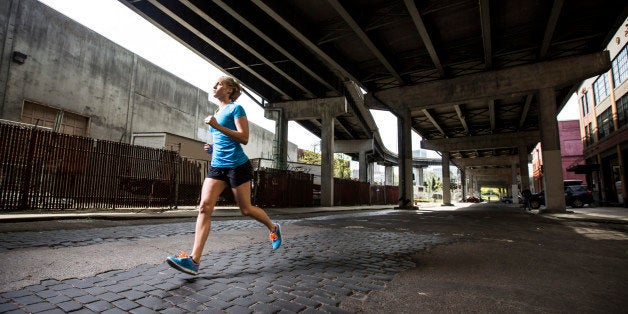
Connected objects are everywhere in a sportsman's life. Every day, new applications to improve fitness can be downloaded on your smartphone. They involve a lot of measurements and statistics but how reliable are they from a scientific point of view? How should we train to improve our running performance? How should my favorite champion should run his race and how should i run my 10km or 1500m tomorrow? By modeling running in the form of equations, and then solving them, we can now predict the optimal strategy to run a given distance in the shortest amount of time thanks to powerful mathematics. If turned into a software, this could become a revolutionary tool for training.
Our model takes into account physiological parameters such as maximal oxygen uptake and total available anaerobic energy and involves several differential equations coupling the unknown variables of the runner: velocity, propulsion force, and anaerobic energy, which the body uses when in oxygen deficit. The equations rely on two basic principles of physics: energy is preserved, and acceleration (or velocity variations) is equal to the sum of all the forces. This second principle is also called the fundamental principle of dynamics.
The difficulty in the numerical simulations is that the equations are coupled, hence none of the variables can be solved independently of the others. Using an optimal control solver developed by a team from INRIA (the French institute for research in computer science and automation), we are able to get a full numerical solution. In particular, this gives access to "instantaneous" measurements for velocity and energy expenditure, in other words, indicate their real-time values at any moment of the run.
Since the publication of the paper in SIAM Journal of Applied Mathematics, we are now able to identify the physiological parameters through several time measurements at regular distances in the race, as soon as we have a good estimate of the maximal oxygen uptake. This is enough to run our program and predict how to run an ideal race. The tool can predict how an improvement of maximal oxygen uptake or total anaerobic energy will improve or modify the velocity, the split times and the number of calories lost in the race. It can also give indications to optimally run when going uphill, downhill or against the wind. This can apply to a champion, and help him improve his performance, or to a regular runner who lacks professional coaching and seeks help. Our predictions closely match the actual strategies used by professional athletes.
We have started our study with running strategies because we had a lot of available data and a lot of people practice it. But our aim is to adapt our modeling to other sports involving endurance, such as cycling, swimming, triathlon, or cross country skiing.
This mathematical model could potentially be used to develop coaching software for professional athletes, or running applications that race against the user by simulating the optimal strategy. It is now a matter of sponsoring to turn our fundamental mathematics into a revolutionary software. Who will be the first group to invest in our research?
Source article: Aftalion-Bonnans, Optimization of running strategies based on anaerobic energy and variations of velocity, SIAM Journal on Applied Mathematics, 74(5), 1615-1636